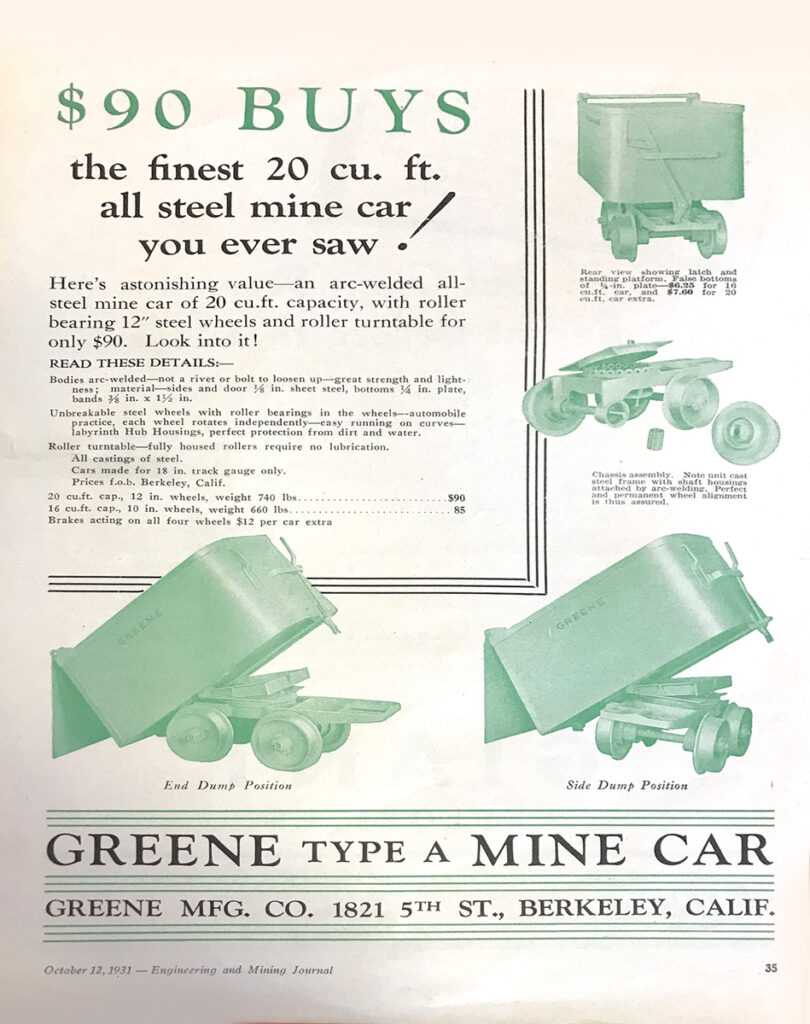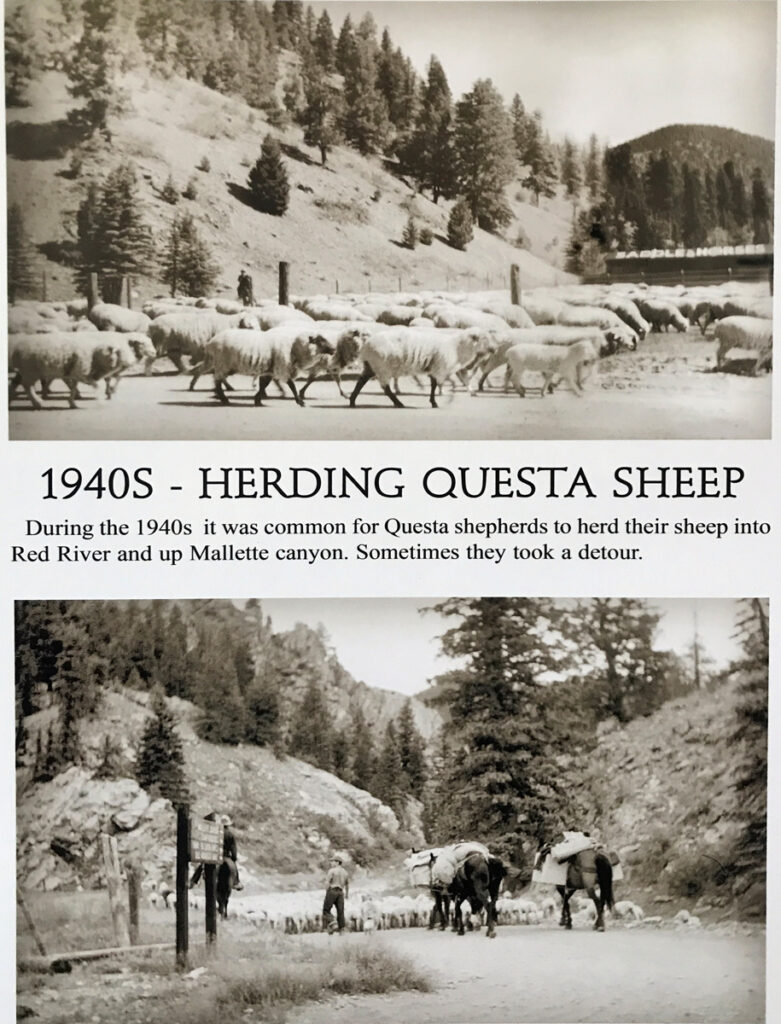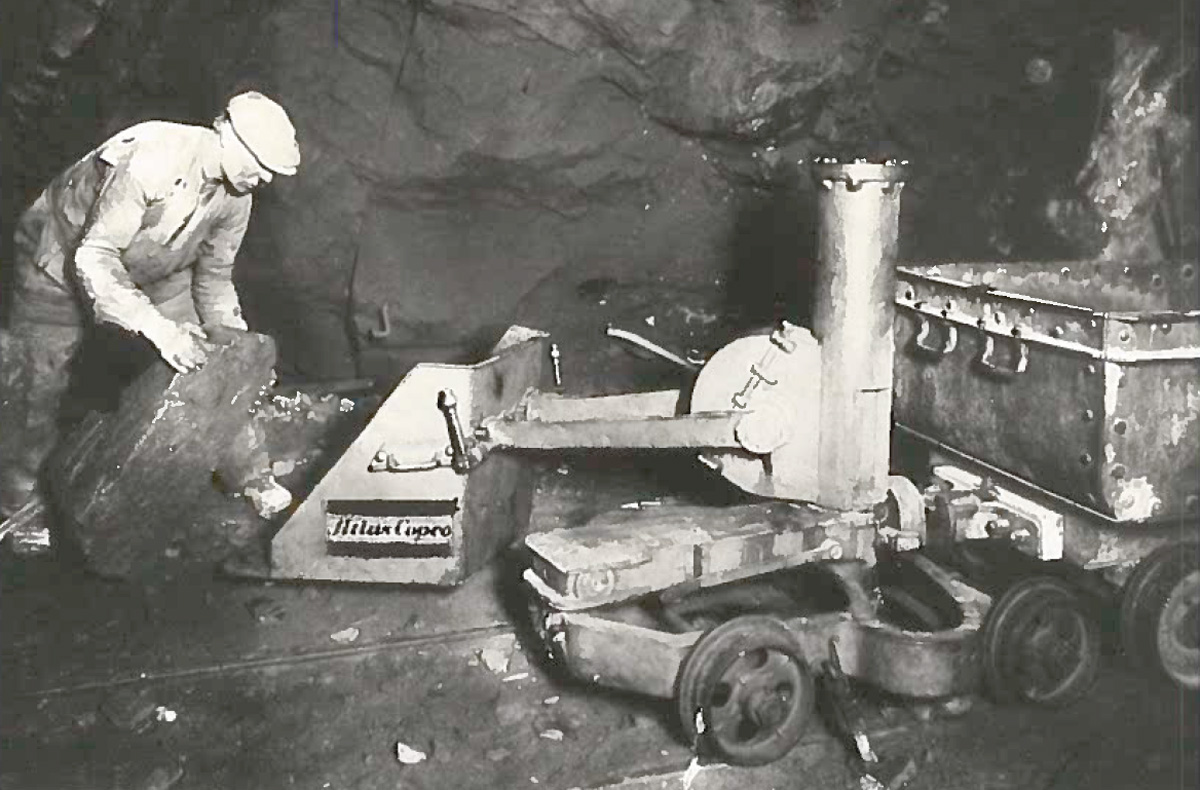By Martha Shepp and many others
This community paper is endeavoring to offer a Questa mine history series over the next few issues, to bring you stories from the earliest discovery of molybdenum right up to the present with the goal to review, freshen up the facts, and celebrate the story of our place.
From Part II:
The beginning of World War I (1914-18) had greatly increased the demand for molybdenum, and assayers In the 1930s, molybdenum’s usage grew beyond its early application for strengthening armor plate and automotive steels into uses for stainless steels, cast iron, and cast steels. With the advent of war in the 1940s and subsequent tungsten shortages, the increased need for high-speed tool steels and ship plate swelled markets.
Part III
As mining operations continued to expand in Questa, costs for haulage, drainage, and ventilation increased significantly, so in 1941 a mile-long tunnel was driven north from Red River canyon (Questa) to the ore deposit. Not until 1935 had electricity come to the Questa mill—pulleys and water power had sufficed just fine! While electricity and computer technology made dramatic changes in the efficiency and monitoring of mill processes, the crushing, grinding, and flotation techniques were much the same as those used in the early days.
By the 1950s molybdenum had become the essential steelmaking commodity with annual world production doubling during that decade, 90% of it in the US. Employment levels at the mine ranged from 30 to 50 workers. Because of increasing difficulties of maintaining the small-tonnage, high-grade production, an intensive exploration program was initiated in 1953. The surface geology was mapped and metal distribution determined by soil sampling. Underground headings were advanced into target areas, and diamond drilling was initiated. By 1957, it was apparent that the Questa mine held promise of large reserves of low-grade molybdenite ore.

1957 Underground mining ceases at Questa and exploration and delineation efforts continue under a $255 million Defense Minerals Exploration Administration (DMEA) matching funds contract. Molybdenum Corporation of America (MCA)’s Washington, Pennsylvania plant built two large ventilation stacks to carry off-gases to the upper atmosphere. During the previous 60 years these gasses were vented directly to the atmosphere in accordance with standard operating practices of the times, but times were changing.
1964 After 170,000 feet of drilling and considerable bulk sampling, MCA proceeds with the development of an open pit mine west of the underground workings. The old mine camp is removed, including the 1955 mill, and a 10,000 ton per day mill is constructed. Pre-mining stripping began for the future open pit.
1965-1983 Open pit mining operations time! During this period, the mill capacity was expanded to 18,000 tons per day and the stripping rate was expanded to 120,000 tons. The mine and mill operated 24 hours a day, 7 days a week, with three shifts working per day. At this time, the mine employed approximately 500 workers.
1968 A major landslide (over 500,000 tons) caused MCA to redesign the mining plan. It was necessary to refinance the operation and over the next three years implement a major stripping program by adding three 17-yard shovels, additional 60R blast hole drills, and a complement of 120-ton trucks. A screening plant was installed to remove gangue (barren material) from the molybdenite vein material, thereby significantly upgrading mill feed.
1970 The road between Questa and Red River is rebuilt.
1971 Mine production at Questa reached 200,000 tons per day.
1973 New Mexico Mining Act calls for more stringent requirements for cleanup and remediation of mining sites.
1974 MCA’s name formally changed to Molycorp, Inc.
1975 Exploratory drilling revealed a deep high grade deposit that could be mined economically only by underground methods. So the decision was made to temporarily phase out open pit operations in favor of this new deposit. The transition was complete by 1985.
1977 International Mining Company was involved in a hostile takeover. To avoid being taken over as well, Molycorp looked for a “white knight,” and subsequently merged with Union Oil Company of California. It continued to operate as a wholly-owned subsidiary of Union Oil and was responsible for all of Union’s mining related activities (except for oil shale and uranium). To better implement the merging of Molycorp into the corporate structure of Union Oil, Molycorp’s headquarters was moved in 1979 from White Plains, NY to the Unocal Center in Los Angeles.
1978 Questa mine begins phasing out its open pit operations and begins construction related to new underground mining. One of Molycorp’s two molybdenum roasting furnaces in PA is shut down as part of a consent decree issued by a Pennsylvania Air Quality Agency due to exceeding sulfur dioxide standards. That roaster had been in operation since 1936.
1979 Development of the underground mine was begun with two vertical shafts bottoming out at approximately 1,200 feet where the haulage level would eventually be, and a mile-long decline was driven from the mill area to the haulage level. The mill flotation area was modernized to accommodate higher grade underground ore. This development effort cost over $350 million.
Primary producers such as Colorado’s AMAX, with the world’s two largest mines, and Molycorp, now the 3rd largest, must choose between shutting down or gearing up for the expected turnaround. Molycorp chooses the latter route. Even though no moly mines are producing in the US, only Molycorp embarks on a massive development effort in anticipation of better times. Operating costs are held constant and labor and supplies are kept under control. Through careful planning and an intensive training program, Molycorp avoided the layoffs often experienced between the phasing out of one mining project and startup of another. Employees are retrained. Mechanics, mill operators and laborers all become construction employees to rebuild the mill after it was closed in 1981.
Nationally, mine turnover is 30 percent and higher, but at Molycorp, it was less than 5 percent, due to the commitment and uncommon flexibility of the workforce. The oil, chemical and atomic workers union has supported Molycorp in their efforts to keep people employed. Average annual income in was $22K. Local contracts and materials – mining equipment and supplies, automotive parts, sand, gravel, and timber were procured from vendors in the Taos and Questa areas.
To be continued…

Author
-

Questa Creative Council Board member and artist: Martha Shepp preaches the gospel of the power of creativity. One of her loves is to collaborate with open-minded genre-free artists like Mark Dudrow, playing life-affirming works that can’t help but spark the innate creativity of listeners like you. Her expressions also take form with words, choreography, and visual art... with ever expanding mashups of all the above.
View all posts



